Rose hips, what are the benefits of rose hips, contraindications
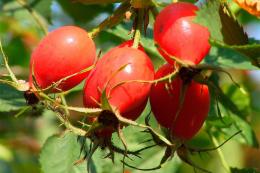
Among garden and wild shrubs there are those that give people not only beauty, but also benefits. The progenitor of all cultivated roses rose hip - a clear confirmation of this. Let's try to figure out why rose hips are useful and whether all people can eat them.
Content:
- Chemical composition and benefits of rose hips
- The use of rose hips in medicinal practice in official and traditional medicine
- Where, when and how to collect rose hips and process them correctly
- Contraindications to the use of rose hips
Chemical composition and benefits of rose hips
In appearance, rose hips resemble berries, inside of which there are hard seeds with a light fleecy coating. But from a botanical point of view, the soft part of the fruit is a modified receptacle, fused with the lower part of the flower. This soft part is botanically called hypanthium. In rose hips, the hypanthium resembles a jug, inside of which there are seeds - nuts. Therefore, the entire fruit is called cynorrhodium or polynut. Rose hips are unique not only in their structure, but also in their composition. The nutritional value of 100 grams of dried fruit is 284 kcal. Of these we have:
- for carbohydrates 193 kcal
- for fats 12.5 kcal
- for proteins 13.5 kcal
The calorie content of 100 grams of fresh berries is only 109 kcal. Rose hips, both fresh and dry, are a rich source of vital substances. By content vitamin C is a leader among food products. If fresh lemon contains 40 mg per 100 grams, then fresh rose hips contain 650 mg, and dry fruits contain 1200 mg. In addition, the presence of other vitamins in the fruits makes rose hips useful, primarily:
- A
- RR
- E
- IN 1
- AT 2
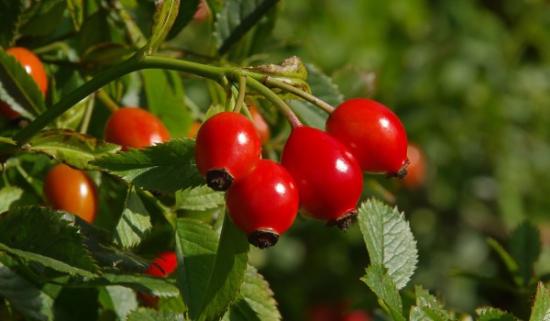
In addition to vitamins, rose hips contain macro- and microelements:
- potassium
- calcium
- magnesium
- phosphorus
- iron
- copper
- zinc
- molybdenum
Complement beneficial features organic acids, flavonoids, sugars, dietary fiber. Consumption of fresh decoctions of dried fruits can provide the body with almost all the vitamin complex and nutrients, as well as help in the treatment of many diseases.
The use of rose hips in medicinal practice in official and traditional medicine
The medicinal properties of rose hips are recognized by official practical medicine. The simplest medicine is prepared from dried fruits, which are sold in pharmacies. Decoctions of them are prescribed for anemia, hypovitaminosis, as a choleretic and immune-strengthening agent.
In pharmacies you can also buy rosehip syrup, which is most often prescribed for vitamin deficiency, as a multivitamin preparation. The production of the drug holosas, which is prepared from an aqueous extract of rose hips, has been launched.
It is prescribed for disorders and inflammations in the gallbladder. It not only dilutes bile, but also improves its output. In folk medicine, decoctions and infusions of fruits, fresh or dried, have been used since ancient times. They treat:
- chronic diseases of the liver and gallbladder
- poorly healing wounds and fractures
- women's illnesses
- exhaustion and anemia
- atherosclerosis and vascular fragility
- colds and inflammatory diseases
The easiest way to prepare a medicine, which is used in folk medicine, is to pour three to four tablespoons of dried fruits with 500 ml of slightly cooled boiling water directly in a thermos. Leave for 8 hours and take 180 ml three times a day. The peculiarities of use are to ensure that the maximum amount of vitamin is preserved in the infusion.
To do this, fresh or dry fruits can be crushed and filled with water, the temperature of which is not higher than + 50 degrees, this can also be done in a thermos, but the infusion time should not be more than 60 minutes. Decoctions and infusions of rose hips will only bring benefits if they are collected in environmentally friendly places and properly processed.
Where, when and how to collect rose hips and process them correctly
The rosehip harvest time is August - September. At this time, the fruits acquire a red or yellow-orange color. It is advisable to give preference to harder and more elastic fruits. After the first frost, their benefits properties are significantly reduced.
When harvesting, the fruits must be picked with part of the peduncle and together with the receptacle. These parts are also important, they are used along with the fruits, increasing their benefits. It is important to remember that you cannot store medicinal raw materials near highways, railways and industrial enterprises.
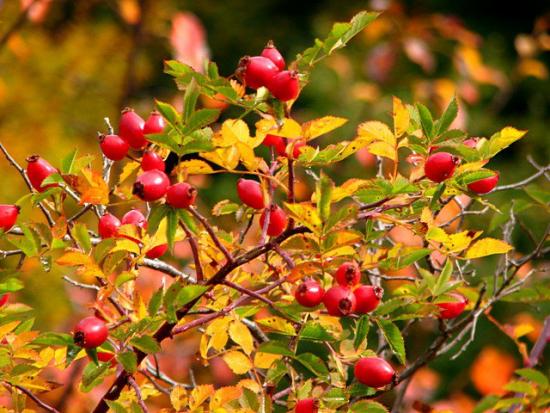
Fruits can be stored fresh for no longer than three days, and if they are intended for processing, then it must be done on the first day after harvest. The simplest and most convenient way of processing is drying. It is important to adhere to the following rules:
- sort through all the fruits immediately after picking, remove all extra branches, spoiled fruits and small debris, no need to wash the fruits
- heat the oven to + 55, place the prepared raw materials on a baking sheet covered with baking paper
- open the door a crack
- maintaining the temperature at + 50, continue drying for about 10 hours
- pour the rose hips into a cardboard box with a lid and leave there for 3 - 5 hours, do not open the lid
- store in bags or jars in a dark place
- shelf life is two years
You can dry rose hips by scattering them in a thin layer in a cool, semi-dark place. The drying period in this case will be three weeks. In addition to drying, you can prepare syrups, jams, and compotes. Despite their beneficial properties, rose hips and preparations made from them are not suitable for everyone.
Contraindications to the use of rose hips
Main contraindications there are few to the use of rose hips, but they exist:
- allergy to rose hips
- increased blood clotting
- acute heart failure
- ulcer, gastritis, kidney disease during exacerbation
In addition, some of the organic acids in fruits can negatively affect tooth enamel. It is better to drink it through a straw or rinse your mouth with water after taking it. Taking into account the listed contraindications, before starting treatment you need to consult a specialist.
Video about the benefits of rose hips:



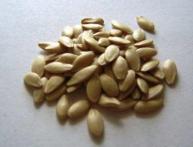

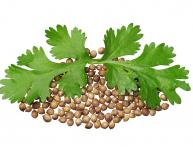



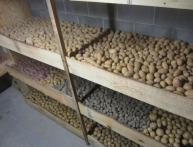

Comments
We have rose hips growing on our site. And it produces quite a harvest. I process all its berries into rosehip syrup. And we add it to tea in winter or drink it little by little.
Every year I harvest rose hips and hawthorn berries, both of which grow on our site. In the winter-spring period, there is no better vitamin and general strengthening remedy than an infusion of these berries.